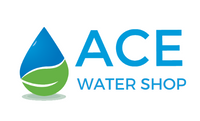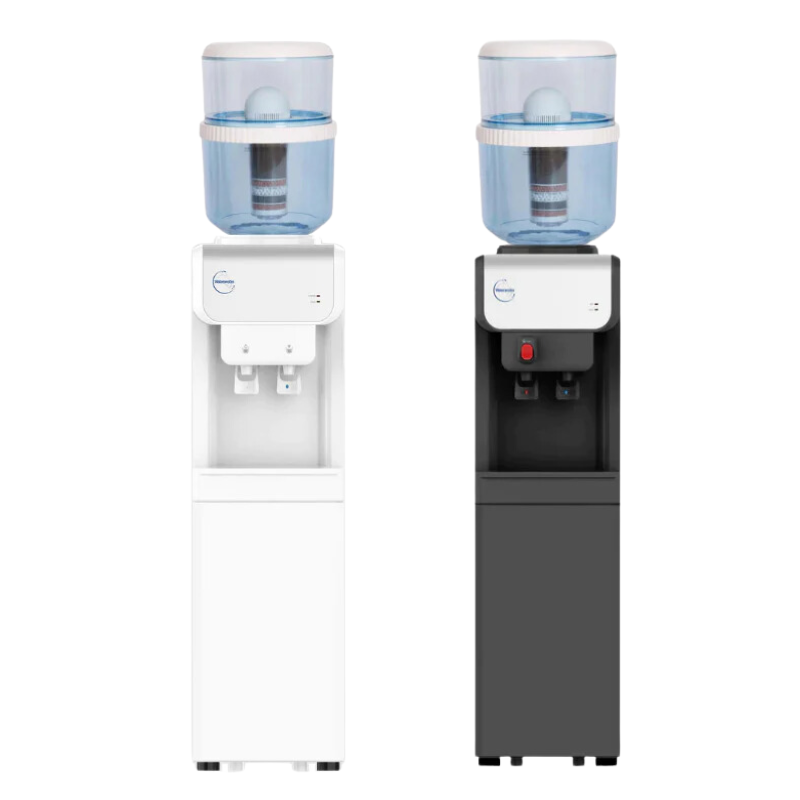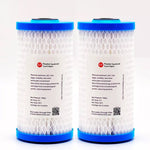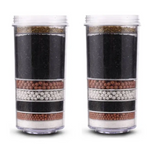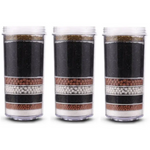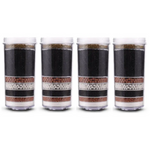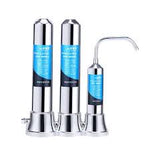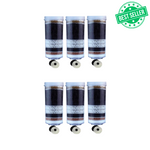You have no items in your shopping cart.
Activated carbon filtration is one of several techniques used in water treatment to remove impurities like organic compounds. Because it may also remove odor-causing contaminants, some frequently use it to make drinking water more enjoyable.
Activated carbon is frequently used in potable water applications because it readily adsorbs synthetic organic pollutants, PFAS, chlorine, compounds that alter smell and taste, and naturally occurring organic compounds. We expect activated carbon filtration to rise as pollution and contamination worsen, particularly in developing countries.
HISTORY OF ACTIVATED CARBON FILTRATION
According to M. Sklivaniotis and A.N. Angelakis' study, "Water for Human Consumption Through the History," the first known carbon filtering machines date back to ancient Minonan Crete. It conveys the water over a 3-kilometer aqueduct, with many cone-shaped terra cotta filters packed with charcoal.
How did humans discover that carbon is an excellent contamination filter? It was most likely first used to eliminate impurities from melted down metal for the production of bronze. It appears that the Egyptians were the first to employ it in a medical setting to eliminate odors linked with illnesses. We learn that sailors in the 16th and 18th centuries kept their drinking water fresh on long trips by storing it in burned or coated barrels with charcoal on the inside.
Gas masks used charcoal air filters to filter out some of the lethal gases used against the soldiers during World War I, although they were only efficient against some poisons. After World War II, the manufacturing and use of activated carbon skyrocket, eventually leading to the invention of contemporary activated carbon air and water filters.
Activated carbon filter technology has advanced over time. The activated carbon market will rise in the coming years, with water treatment driving the development, while the COVID-19 pandemic has thrown some doubt into market predictions.
ACTIVATED CHARCOAL AS A WATER TREATMENT
Activated carbons are one of the most effective ways to remove important contaminants, including THM and DBP, from water supplies, as well as organic components and residual disinfectants. It doesn't only improve the taste and reduces health risks. But, it also protects other water treatment units from oxidation and organic fouling, such as reverse osmosis membranes and ion exchange resins.
Because of its wide range of uses and functions, activated carbon remains one of the most popular water treatment treatments in the United Kingdom and Ireland.
HOW DOES A CARBON BECOME ACTIVATED?
Activated carbon is charcoal that went through different processes to improve its ability to trap gas molecules. It is first injected with heated air, carbon dioxide, or steam, which causes the carbon to form a lattice of small pores, greatly expanding its surface area. It increases the number of sites that trap molecules, making carbon a significantly more effective filter media. A single gram of activated carbon can contain hundreds of square meters of internal surface area, according to research from the Ohio Environmental Protection Agency. The majority of chemically-treated activated carbon improves its ability to filter certain contaminants.
HOW IT WORKS
Adsorption is the method by which activated carbon water filters remove contaminants from the air. You should not confuse it with absorption. The item you want to remove (let's say water) absorbs into the framework of the absorbent (like a sponge), yet it doesn't become a molecular component of the absorbent. As a result, when you use a sponge to absorb water, the water does not chemically attach to the sponge. It simply fills in the gaps within it.
Carbon filters, on the other hand, work with adsorption rather than absorption. The main distinction is that contaminants adhere to the exterior of the carbon during adsorption. On the other hand, absorption involves contaminants absorbing into the structure itself–much like a sponge.
Carbon consists of a lattice of interconnected carbon atoms. When a molecule of a gaseous material passes via the carbon, it can cling to the bed's surface if an open adsorption site exists. The activation procedure is crucial because it increases the surface area available for gases to adhere to.
Carbon water filters use the adsorption mechanism to filter organic compounds (gases) from the air. The difficulty with the activated carbon layer is that the gaseous contaminants gradually fill up the activated carbon's adsorption sites. The filter can no further catch pollutants after saturating the bed. Chemicals with a higher attraction for an adsorption site can displace those with a lower affinity. A chemical's relationship with the sorbent is highly reliant on ambient factors like temperature and relative humidity. As a result, it may discharge different compounds from the filter as conditions vary. When a carbon water filter becomes saturated, it may emit an unusual odor. It's a clear sign that your carbon filter needs replacement.
BENEFITS OF ACTIVATED CARBON FILTRATION
The use of activated carbon filters has several advantages. You can use these filters to remove undesired or dangerous particles from your air that could be hazardous to your health.
You can use activated carbon filters in combination with HEPA filters in air purification systems to trap recognized allergens and contaminants such as:
- Dust
- Smoke
- Mold spores
- Pet hair
- Lint
- Common household chemicals
- Benzene and other VOCs
Carbon filters also help to reduce odors, ensuring that your interior air is fresh. Activated carbon and HEPA filters, when used combined, can trap 99.97 percent of microscopic particles 0.3 microns and larger, and most larger particles, including spores. People who suffer from allergies to polluted air, such as secondhand smoking, may benefit from activated carbon filters. If you smoke or live with someone who smokes, putting an activated carbon filter in your home air purification system can help you breathe easier. Using it as a water filter also helps eliminate contaminants to give you safe and clean water.
ACTIVATED CARBON FILTRATION WATER TREATMENT IS EFFECTIVE AGAINST:
- Unwanted tastes and odors
- Chlorine and iodine residuals
- Detergents
- Radon,
- Several artificial organic and volatile organic compounds, such as many pesticides.
TYPES OF ACTIVATED CARBON FILTERS
Activated carbon filters do not adsorb all contaminants in the same way. Contaminants stick to the surface of the carbon granules or become stuck in the filter's microscopic holes. In most cases, some use an activated carbon filter in conjunction with a pre-treatment filter to eliminate any silt or iron particles that could clog the carbon filter. An activated carbon filter's solid material is a unique carbon made specifically for this function.
Powered Activated Carbon
Water treatment plants employ powdered activated carbons to control taste and odor and guarantee the removal of organic pollutants. We add PACs to the water stream early in the treatment procedure. It's to allow for only contact time before applying other treatment chemicals.
They shouldn't be coated with any other water treatment chemicals until they've had enough time to contact the water stream. Usually, PACs will need at least 15 minutes of only contact time with the water stream. Most crucially, it would help if you never used PACs in conjunction with chlorine or potassium permanganate. It's because the activated carbon powder will merely absorb the water treatment chemicals.
Depending on the kind and level of pollutant, typically needed dosages can range from 1 to 100 mg/L. However, dosages of 1 to 20 mg/L are most common for treating water streams for taste and odor control. Where PACs are given later in the treatment process, you will need higher dosages to allow any adsorption of other treated water supplied earlier. It eventually filters PACs out of water streams by sedimentation or filter beds.
Granular Activated Carbon
Granular activated carbon is frequently used in continuous treatment processes in current treatment systems. Despite having a larger initial investment than PACs, GACs have a lower operational cost since they may thermally generate the adsorptive characteristics.
Granular activated carbon has exceptional adsorption characteristics. It can be employed in static beds or as part of a mobile filter system. It's because of its great surface area to volume ratio, allowing it to handle many pollutants.
The purified water stream runs in the opposite direction of the GACs. You can frequently remove the GAC at the top of the filter and replace it with modern or regenerated GAC to maintain strong pollutant adsorption. GAC reactivation lowers operating costs, boosts ROI, and ensures the treatment system's continuing operation.
By replacing a portion of the granular media with GACs, existing water treatment, fast sand filters can be constantly changed and reconstructed for filtration-adsorption. Because no extra filter boxes, underdrains, or backwashing systems are required, this adjustment can greatly cut capital expenses. On the other hand, filter-adsorbers have shorter filter run periods and require more frequent backwashing than post-filter adsorbers.

FINAL THOUGHTS
Activated Carbon Filtration is an ideal way to keep pollutants from your water. Carbon filters are simple to install and maintain, with most running expenditures consisting of filter replacement. Some carbon filters may require particular hazardous waste management and disposal. It can be costly regardless of the type and concentration of the pollutant to be removed. Other filter materials, such as charcoal and ceramic, are also available.
